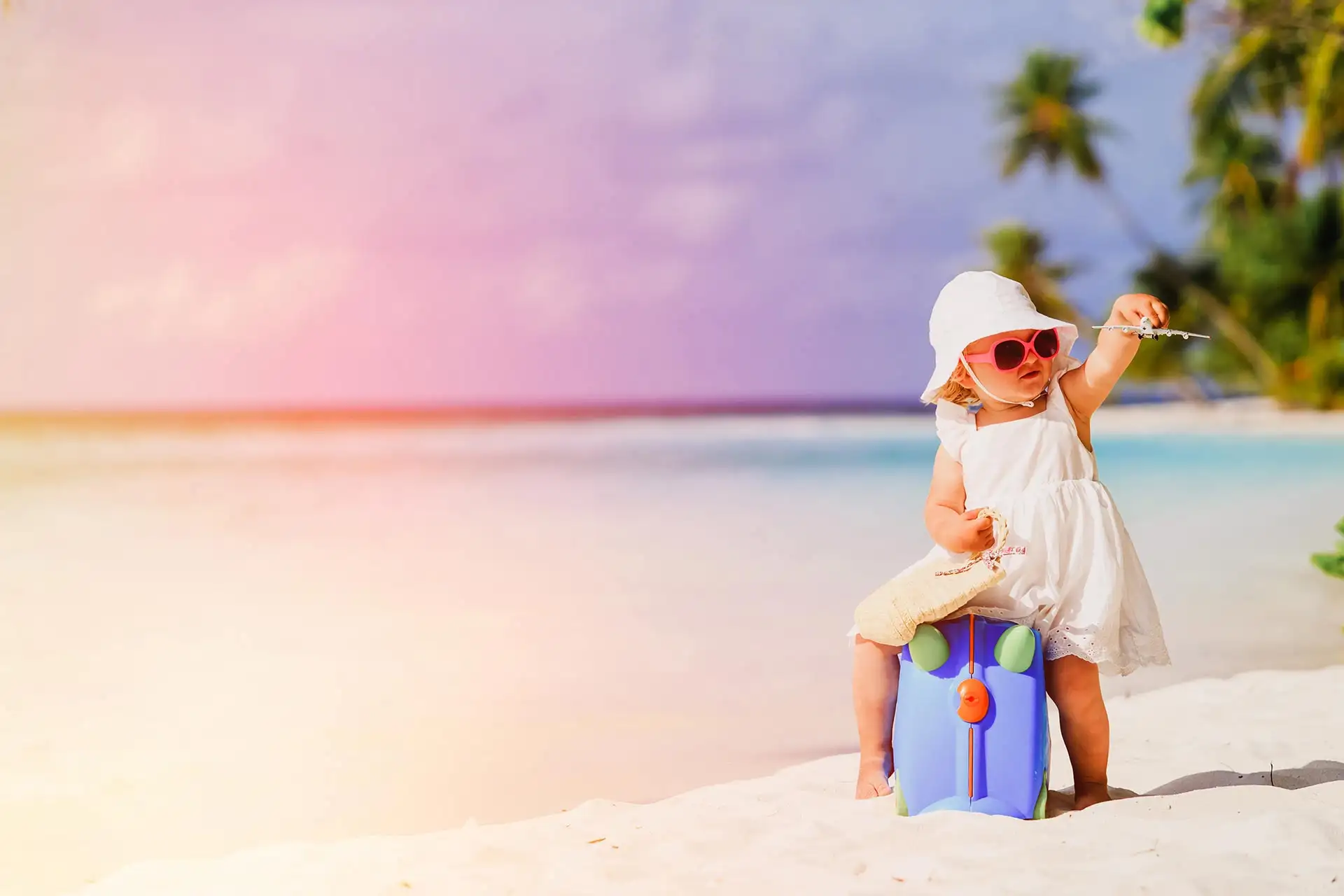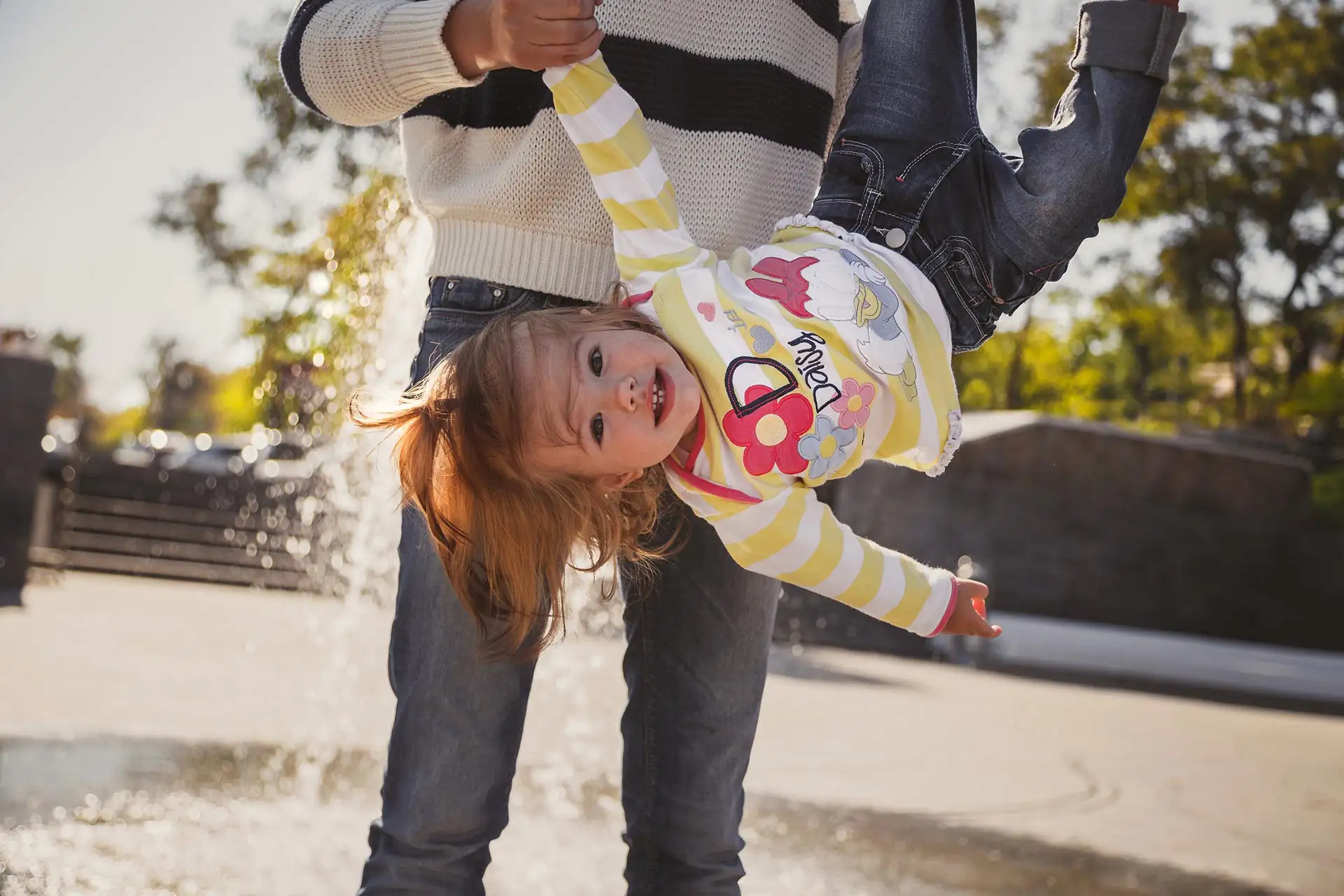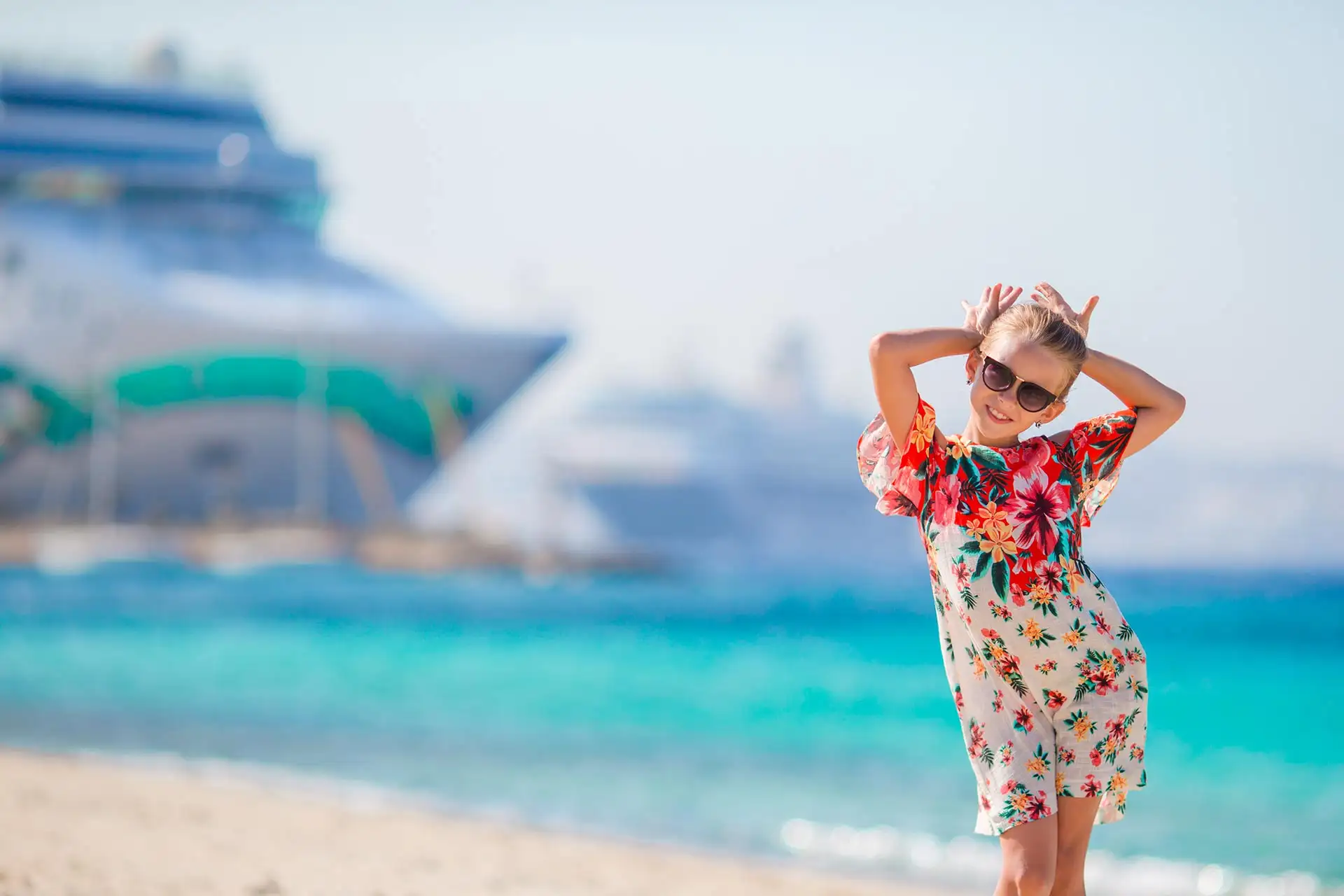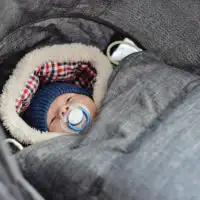
At what age…
Can My Child Travel on an Airplane?
Infants of any age are allowed to fly, although pediatricians suggest parents wait until the child is at least 2 weeks of age. An upside to infants on planes: airlines allow children 2 and under to sit on the lap of an adult, saving the cost of an additional seat. However, the negatives can evolve in that exact situation, as an infant would be safer strapped into an infant carrier attached to his or her own seat (and it frees up mom or dad to enjoy an on-flight beverage or meal, and to easily get up to use the restroom). The wiggle room is highly recommended on long flights, especially overseas.
While infants are not restricted from flights, the enclosed flight is often considered a germ haven. (Think of all the times you’ve come down with a cold after traveling on a long flight beside a person sneezing or coughing.) Infants are more susceptible to illnesses, especially if they have not received their vaccinations. Some suggest waiting until a child is at least 4 to 6 months before attempting air travel.
One problem infants may have is cabin pressure causing pain in their ears. As they do not understand your commands to older children to yawn or chew gum to avoid the pressure, providing an infant with a pacifier or bottle to suck on during take off and landing can help alleviate any pressure.
Related: 10 Ways to Amuse Kids at the Airport and Surviving the Airport with Kids
Can My Child Travel Out of the Country?
Children may receive passports as infants, and are required to have a passport when traveling internationally by air. Children under the age of 16 may travel by car or by sea to Canada, Mexico, or the Caribbean with a copy of his or her birth certificate.
Although infants can travel internationally, there is some concern that children should have their vaccinations from illnesses like measles, mumps, chicken pox and hepatitis B, as these illnesses may be more common in other parts of the world. Children begin receiving their first round of vaccinations at 2 months with most completed by 18 months, so if illness is of concern, you may want to wait until the basic vaccinations are complete.
Besides immunization from basic illnesses, the CDC notes the most common illnesses for children traveling overseas are diarrhea and malaria. For visits to more remote areas, such as Indonesia and Africa, additional vaccinations are highly recommended for adults, most notably a malaria or yellow fever vaccination. Yellow fever immunization is not recommended for children under 9 months, and some malaria vaccinations are not recommended for children under the age of 8. You may want to wait to visit countries recommending these travel immunizations until your children are older.
Related: Passports for Kids

Should I Take My Child to Disney for the First Time?
Disney World is a dream come true to children, and many parents are eager to take their children to the Magic Kingdom and other Disney theme parks. But when is the best time to take a child? When will they enjoy it the most? Many message boards feature this discussion and in reviewing the answers and understanding our own children, most parents find ages 4 and up are the better ages to introduce the kids to the wonderful world of Mickey.
While infants may surely sleep their way through the theme park as mom and dad enjoy the rides, most rides aren’t recommended for infants and one parent will have to stay back while the other rides. Disney knows it has a strong adult following as well, and even provides a special rider swap program to allow one parent to ride while one waits, and then switch places for the second ride so no one has to stand in line again.
Although 2- and 3-year-olds certainly know their Disney characters early, at this age they may still be taking two naps a day and get wiped out pretty quickly. That doesn’t mean they cannot enjoy Disney World; it just means adjusting your expectations to visit for a couple of hours in the morning, a couple of hours in the afternoon, and a couple of hours in the early evening, returning to the hotel for rest in between. (Disney provides a designated nap area, as well). It also means skipping the rides geared for older kids and perhaps spending most of the visit in Fantasyland, where the rides are friendlier for young kids.
At 4 and 5, children may have the stamina to hit the park in through the early afternoon, but will most likely need a rest halfway through the visit. They are also able to appreciate bigger rides without being frightened, as well as the parades and fireworks. Once kids become school-aged, they really hit their stride and can handle a full day at a park.
Related: Visiting Disney With Infants
Should I Take My Child to an Amusement Park?
With an amusement park, it seems like a no-brainer that kids will enjoy a visit. Then again, there are many reasons they may not. Consider that most amusement park rides have height restrictions, and that most rides are geared to children over 42 inches tall. You’ll experience a scene right out of the movie “Big” with a kid wishing he was tall enough to go on the rides.
Before taking your child to an amusement park, research the park’s website and find out how many rides are geared toward younger children, if a special area of the park is geared to younger kids (so they won’t get trampled by the teens running around), and what the height restrictions are.
Related: 11 Amusement Parks for Kids and Toddlers

Should I Take My Child to a Big City?
There is no reason to skip a big city vacation just because you have an infant in tow. While you’ll want to skip the Broadway show in New York and visiting the casino resorts of Las Vegas, infants make great traveling companions because they sleep so much. Just as experienced parents will tell you to go out to your favorite restaurants while your infant is more likely to sleep through the dinner, your infant may sleep through a lengthy stroller ride through a great museum or historical attraction.
Most hotels provide cribs or Pack ‘n Plays for free or a minimal fee. Select a hotel with a small refrigerator to store baby food or bottles; if it only offers a mini-bar, request it be emptied so you can use it. Use the hotel’s coffeepot to heat water to pour into the ice bucket, and voila, you can heat a bottle in your room!
Related: 10 Best Cities for Family Vacations
Can My Child Ride in a Taxi without Car Seats?
Children are not required to sit in a booster or child seat when riding in official taxi cabs. In New York City, for example, yellow medallion taxis and their passengers are exempt from car seat and seat belt laws (meaning you don’t need to strap in to ride). However, just as you would buckle into your own car, it is wise to strap yourself and your children into a taxi following state laws. Uber is a great option for families, as many vehicles offer car seat options in select cities. If you choose to use your own car seat, drivers are required to give parents time to install them. But of course, the dilemma is that once at your destination, you’ll need to carry the car seat with you. Even if you want to use a baby carrier, you’ll need the base in order for it to strap in properly. For these reasons, this is a safety call of parents. Do you feel comfortable riding with your infant in your lap during a 10-block or across-town taxi ride? You’re legally welcome to do so.

Can My Child Go on a Cruise?
While cruise ships touted for being family-friendly offer an array of activities for children, there are some cruise lines not equipped to welcome infants. Some cruise lines do not allow children under 2 to be cared for in their kid’s programs. Others allow young children, but may require parents to take care of all diaper changes. Some cruise lines also require parents to carry a beeper or cell phone provided on the first day of the cruise if leaving children in the kids’ clubs. Some cruise ships do not have pools for children who are not potty trained, not allowing swim diapers.
Some of the best cruises for infants include Royal Caribbean, which has a program for infants 6 to 18 months, and Disney Cruise Line, which allows children 6 months and older. Cruise ships typically have tight sleeping quarters, so if you require a crib or want to bring a Pack ‘n Play, look for family-specific cabins.
More From Family Vacation Critic:
7 Best Resorts for Infants
9 Best Resorts for Toddlers
Our team of parents and travel experts chooses each product and service we recommend. Anything you purchase through links on our site may earn us a commission.






